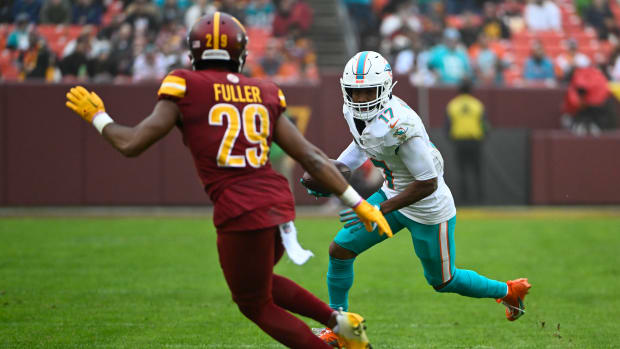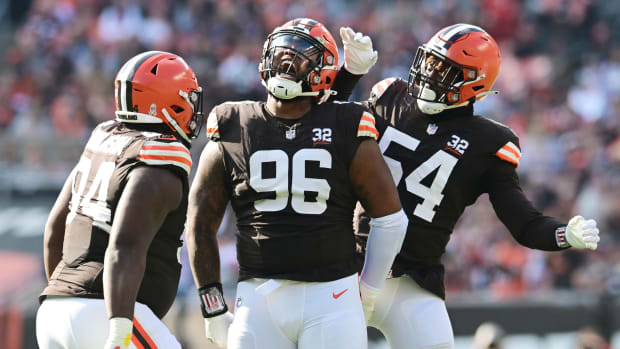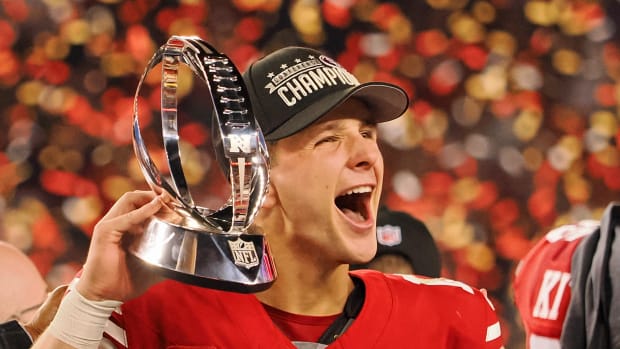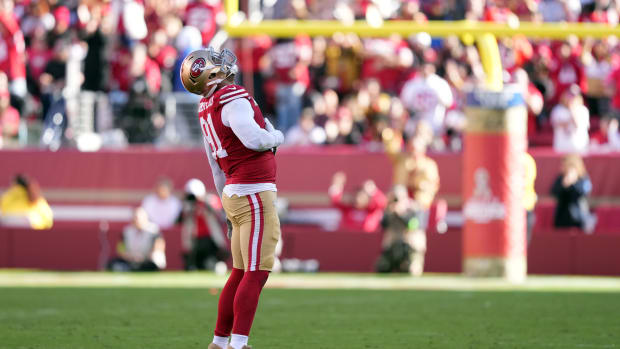49ers Draft Capsule: Tight Ends
The 49ers have met with nearly every tight end they could draft. They may be looking for an heir apparent to George Kittle or could double down and draft a receiver and a blocker.
This deep dive gives them flexibility in which players to target, with the ability to select a tight end with confidence anywhere in the draft.
If the search is for a future starter, the choices may come down to a unicorn or a chess piece.
Tier 1: Day 1 Starters
Mid-to-Late 1st Michael Mayer (Notre Dame) 6-5/252
Mid-to-Late 1st Dalton Kincaid (Utah) 6-4/246
Early-to-Mid 2nd Darnell Washington (Georgia) 6-7/272
Early-to-Mid 2nd Luke Musgrave (Oregon St) 6-6/253
Early-to-Mid 3rd Sam LaPorta (Iowa) 6-3/245
Mid 3rd Tucker Kraft (South Dakota St) 6-5/254
Mayer and Kincaid could be stars. Washington is a dominant blocker but was underutilized in the passing game at Georgia. The final three are all excellent receiving targets. LaPorta posted solid numbers despite poor quarterback play at Iowa. Kraft was injured this year but had a dominant 2021.
A Niner trade into Tier 1 seems unlikely given their deep research on the class. If they choose to move up, LaPorta would be within reach, a great fit, and a high-impact addition.
Tier 2: Potential 49er Targets from the 3rd to 5th Round
Late 3rd Zack Kuntz (Old Dominion) 6-7/255 – Exceptionally athletic at the Combine but that doesn’t show up on his tape consistently. Kuntz was in the top three at the Combine in arms, 40, 10 split, bench reps, vertical, broad jump, 3-cone, and shuttle. With the NFL valuing athleticism so highly, Kuntz is projected to go late 3rd.
Kuntz has a tight end’s upper body and a receiver’s legs, which increases his injury risk, he only played in five games this year. The underdeveloped legs limit his post-contact yards, he has no YAC game. Kuntz has great burst to separate, good ball skills, a long catch radius, and big hops (40 vertical tops in the class). He’s an average blocker, only a quarter of his snaps were in-line and he has leverage issues due to his height.
Despite the risks and an All-Combine label, Kuntz is worth a look because he’s one of the few with the upside to be the 49ers' future at tight end. If Kuntz reaches his potential, his upside dwarfs the other targets. If the Niners take Kuntz, it’s a bet on themselves to develop his lower body and coach him up.
Early 4th Luke Schoonmaker (Michigan) 6-5/251 – He’s a solid blocker but limited as a receiver with no YAC ability and a contested catch rate under 30%. Smart in identifying gaps in the defense, 4.6 speed, will get first downs but not big plays. 3 TDs for 418 yards. Needs to add power, he didn’t lift at the Combine or on his pro day. Oldest in the class at 24 along with Will Mallory.
4th Josh Whyle (Cincinnati) 6-6/248 – A receiving tight end capable of higher production, he wasn’t targeted much at Cincinnati, 3 TDs for 326 yards. Deceptive acceleration and tracks the ball well, with good hops, but no YAC game and a low contested catch rate this year. He has short arms and only 15 bench reps. Whyle’s an inconsistent blocker due to his lack of power.
5th Davis Allen (Clemson) 6-6/246 – A reliable receiver and blocker with good hops, Allen excels at the catch point and has caught 16 of 19 contested over his career. The drawback is he’s slow at 4.84/1.6, isn’t a separator or a YAC player, and has a limited route tree. His power is a question mark as he didn’t lift at the Combine or his pro day. As a blocker, he has violent hands and can sink to create leverage.
5th Brenton Strange (Penn State) 6-4/253 - A smart technically sound blocker with good power (23 bench reps). As a receiver he has hops and acceleration but not speed, 4.7/1.54, he struggles to separate and doesn’t have a developed route tree. 5 TDs and 362 yards. His 1.54 10 split indicates he has the potential with coaching to be a better separator.
Tier 3: Potential 49er Targets from 6th to 7th Round
6th Brayden Willis (Oklahoma) 6-4/241 – Used as a big slot receiver and an H-Back, Willis’ versatility allows Kyle Shanahan to place him in multiple positions. Willis has good ball skills, he scored eight total touchdowns for Oklahoma on over 500 yards receiving. A YAC threat, Willis ranks third in the class with 15 missed forced tackles, but his contested catch rate is under 40%. He’s a reliable inline blocker and effective downhill, but his size could be a limiting factor, he had 20 bench reps at Indy.
6th Will Mallory (Miami) 6-4/239 – A dynamic receiving threat, Mallory has 4.54/1.59 speed to separate and has good hops. His hands are inconsistent, with a 15% career drop rate, though he was at 7% this year. The drawback is his blocking, it’s not at the NCAA level much less the NFL. He’s best used as a big receiver. The other concern is he’s 24. COVID has pushed the player ages up in this draft.
7th Payne Durham (Purdue) 6-6/258 – Durham won scouts over at the Senior Bowl practices for his work both as a blocker and receiver. He had 8 TDs for 560 yards, with 10 missed forced tackles and a contested catch rate of 57%. Durham is slow at 4.87/1.61, and only had 14 bench reps at Indy, yet he produces. He plays with physicality as a blocker and can make combo blocks to the second level, but his issue is speed, he doesn’t separate, and he struggles blocking vs. faster defenders.
7th Cameron Latu (Alabama) 6-4/242 – Latu is a converted linebacker and that shows up in his traits and production. 4 TD and 379 yards, he lacks speed (4.78) and power (14 bench reps), and his 9% drop rate is a concern. He plays a violent game. A physical blocker, and he’ll lower his shoulder to take on defenders. His best value, for now, is on special teams where he shined for Alabama.
Prediction
The unicorn is Kuntz, a big risk/reward gamble, but the reward can be massive given his athleticism. A 6-7 tight end with speed, a large catch radius, and big hops can dominate in the red zone and move the chains. The concern is the huge gap between his athletic potential and what he is on the field right now, along with the injury risk.
The chess piece is Willis, who can be moved throughout formations as a receiver, blocker, or runner. Unlike Kuntz, the proof is on the field with in-line blocking ability, eight touchdowns, 500+ yards, and a YAC game.
The rest of the targets appear to be lower-ceiling role players. Schoonmaker is a proficient blocker that can get a first up the seam and that’s it. With Whyle, Strange, Allen, and Durham all of them are good not great with key weaknesses. Mallory is a big receiver that can’t block. Latu is a converted linebacker and shows it. All of them would be a welcome addition but lower impact.
Willis is great value for a late round pick. He’s not a traditional H-Back in having fullback touches, but he does have legit receiving/blocking skills and is capable of making big plays.
I get understandable pushback on Kuntz, what he is now is a giant ball of clay. But this isn’t a draft of what these guys were but how they project to the league after coaching and body development. And that’s where Kuntz makes sense. It’s a roll of the dice, but take Kuntz to his potential and you have Kittle’s replacement. Develop one of the others and you’re still looking for Kittle’s replacement.





